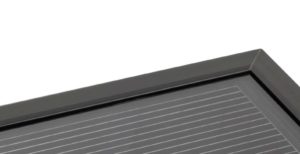The global solar photovoltaics (PV) industry has entered a new phase. In 2019, it is cheaper for many homes and businesses to generate solar electricity on their rooftops than to purchase from their utility. In large-scale applications, power generation from PV is competitive with a range of conventional sources in terms of levelized cost of electricity (LCOE).
The 2018 Bloomberg NEF New Energy Outlook forecasts that wind and solar PV will account for 50% of the world’s electricity generating capacity by 2050. In an emissions-constrained energy economy, high volume, energy efficient, and environmentally friendly PV manufacturing and production will play a central role.
This emerging cost paradigm will also open up new opportunities for solar deployment. While established rooftop and utility-scale solar applications will continue to increase in size and number, PV will play a vastly increased role as an integrated element in our built environment, appliances, and mobility solutions.
To meet the needs of this rapidly emerging development, efficient, environmentally friendly, reliable, flexible, lightweight, recyclable, and cost efficient technologies will be required. Copper indium gallium selenide (CIGS) thin film PV is ideally positioned to fulfill this role based on its inherent advantages and ongoing R&D activities.
